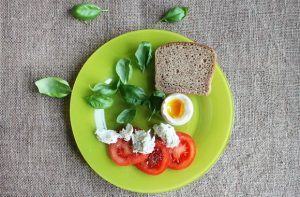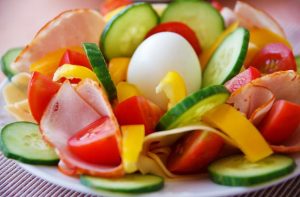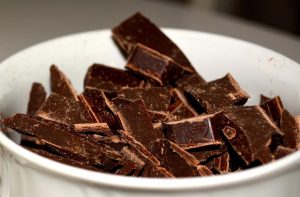The health benefits of grains
Grains are the part and parcel of our life. Many of our food items consist of grains. Any kind of food made from cornmeal, wheat, oats barley rice, or any other cereal grain is said to be a grain product. Other examples of grain products include oatmeal, pasta, breakfast cereals tortillas, grits, and bread. Before proceeding to grain benefits, we would like you to know their two important types.
Grains are usually divided into two types whole grains and refined grains. The germ, bran, and endosperm are the part of the whole grain and they contain the entire grain kernel while the whole grain has removed germ and bran. Examples of whole grains are whole wheat flour, brown rice, oatmeal, etc. Examples of refined grains are white flour, white rice, white bread, etc.
Provide Us with Energy
Products of grains are rich sources of energy. In Asia, whole grains are the main items of food. People daily use them and remain healthy. They provide enough energy to enable us to carry out all our work easier. They are always in demand and are quite beneficial to our life.
Low In Fats
Almost all of the grains are low in fat content. Diet rich in fat contents is quite harmful on a long-term basis. They deteriorate our life by increasing cholesterol and fat.
Low Heart Diseases Risks
Since grains have low fats contents, therefore, they prevent heart diseases. Using them daily can lead to a low risk of cardiovascular accidents. Fibers present in grains are also known to reduce the risk of heart diseases.
Good Sources of Proteins and Carbohydrates
Grains are great sources of proteins, carbohydrates as well as fibers. They also possess a good proportion of minerals and vitamins. All of these are necessary for maintaining a healthy and disease-free life. Incorporating a variety of grains into your diet is one of the finest ways to guarantee a sufficient intake of carbohydrates and fibers. Carbohydrates help digestion by synthesizing healthy bacteria in our intestines. Carbohydrates also aid in increasing calcium levels.
Enhance Digestion Function of Body
The grains possess fibers that are essential for our stomach and intestine. These fibers increase the digestion of ingested material and allow them to leave our bodies easily. In this way, digested food does not remain in our digestive systems and this prevents constipation and various other hazards.
Decrease Cancer Risk
By increasing the time food to excrete from the body, they prevent the risk of cancer in the colon and stomach. Fibers provide bulk and decrease the time of staying digested food material in the intestine. If this food material remains there for a long time, it will lead to cancerous changes in addition to constipation.
Necessary For Growing Up Children
Grains are essential for children of growing age. They provide carbohydrates, proteins, and many other vital nutrients and are therefore all lead to the proper growth and development of your children.
Satisfy Our hunger and Great To taste
Not only grains are a rich source of nutrients and provide benefits to our body, but they also satisfy our hunger very well. The tastes they possess have no comparison. They are quite tasty and all people ranging from all age groups love to eat them and include them in their diet. Even rice and flour, the major grains, are the only food in some countries and they are included in the diet on daily basis.
In a nutshell, grain items for consumption provide an uncomplicated and inexpensive way to include high-quality nutrition in the diet.

Wheat Benefits
What is wheat and what is so healthy about it? The total health benefits of wheat depend on the form in which you consume it. Most of us think of wheat as the healthy version of the beloved “white” bread. But the wheat is where it all starts, where all the health benefits start.
Wheat is a type of grass with no true place of origin. It is grown all over the world. The most common product made from wheat is flour. This has much to do which what we think of when the term “wheat” is mentioned, again, we think of how much we love “white” bread. This is because the flour made from wheat is used in the widely produced and commonly consumed, “white” bread. But white bread and white flour are not where we gain the most nutrients from wheat. It is when wheat is in its most natural form that we can reap all the nutritional benefits: whole wheat bread, whole wheat flour, whole-wheat pasta, etc.
Wheat has many important minerals and vitamins that it can offer us. Just to name a few, it contains, calcium, magnesium, sodium, potassium, zinc, manganese, copper, and vitamins A, B, E, K, D, and PP. Wheat has been known to have a positive impact on the relief and treatment of anemia, asthma, tuberculosis, breastfeeding, and sterility.
Germinated wheat has 3 more times the amount of vitamin B than common wheat, making it a great overall health benefit in protection against certain cardiovascular diseases, skin diseases, and gastrointestinal problems and even maintaining balanced body weight. In addition, wheat can help lower cholesterol levels and has also been shown to help prevent cancer.
As mentioned before, wheat is best consumed when produced as whole wheat bread, whole wheat flour, whole-wheat pasta, etc. However, we can also consume it as a beverage. Green wheat juice is made from wheat and has some strong detoxifying benefits to the body. Health experts suggest we consume green wheat juice on an empty stomach and add vegetables for a stronger and more nutritional beverage.
Women who eat wheat tend to weigh less. Studies have shown that consuming wheat, in its whole grain form, will make you less likely to gain weight. These studies were conducted by Harvard Medical School over 12 years of women who consumed whole-grain foods, such as wheat.
Some of the latest research has shown that individuals, who consume refined grains, are linked to weight gain and diabetes. However, individuals who consumed whole grains, such as wheat, have lower levels of cholesterol and lower blood pressure.
It is really easy to add wheat into your daily routine. Here is a list of common wheat products that you can consume daily that contain an appropriate amount of fiber to keep you healthy:
- Wheat Spaghetti
- Wheat Bread
- Wheat Germ
- Cracked Wheat
- Instant Chocolate Drink Mixes
- Whole Wheat French Toast
- Wheat Flour in Baking recipes
These are just a few to name. Remember that when you are searching for natural wheat products that use wheat in its most nutritious form look on the ingredients list of the product and make sure it states that it is whole grain or whole wheat. Luckily, The Whole Grain Council has created an official packaging symbol that helps us recognize products if it is a whole grain product. When you see that Whole Grain Stamp on a wheat product, you will know for sure that you are going to consume some wonderful food and receive some wonderful health benefits!

Quinoa Benefits
Quinoa, what? Most of us have never even heard of Quinoa, and if we have, we think of it as some odd vegetarian dish that probably has no flavor. Hate to break it to you, but we are all wrong. Quinoa is not just for vegetarians and it is quite delicious! In addition to it being tasty and satisfying, it also offers us a great deal of nutrition and overall health benefits.
Quinoa has been around for thousands of years. It is native to South America, primarily in the areas of Peru, Bolivia, and Chile. Like most crops, quinoa was originally thought of as a weed before it was cultivated into a crop that we consume regularly. In South America, quinoa was an essential food for the Indians because it was one of the few crops that could survive the cold temperatures and high altitudes and it also was known for its wonderful nutritional assets.
The media these days have popularized quinoa to the general public, emphasizing its delicious taste and nutritional value, making it more common in households around the world. One of the main reasons the media has created such hype for this little grain is because it tastes great and helps people lose and maintain a healthy weight. One of the reasons for this is that it has a low Glycemic Index. The Glycemic Index level raises an individual’s blood sugar level, making them less likely to snack between meals or overeat at main meals.
Quinoa is also very high in iron, so it is great for iron-deficient anemic s that need higher levels of iron in their daily diet. It is also beneficial for vegetarians who do not get adequate levels of iron from their diet due to not eating red meat. Quinoa is also an excellent source of complex carbohydrates, which has an amount of fiber that helps slow down the absorption of food and makes us feel longer.
Calcium, Phosphorus, Manganese, Zinc, Potassium, B Vitamins, and Magnesium are all important minerals and vitamins that are found in quinoa. These nutrients make quinoa offer us health advantages such as having healthy bones and teeth, proper nerve and muscle interaction, repairing damaged tissues and cells in the body, regulating our metabolism, giving us healthy eyes and skin, assisting in wound healing, and providing us with energy, and most importantly, promotes a healthy immune system. These vitamins and minerals can also help protect us from high blood pressure, kidney stones, anxiety, obesity, stroke, and bone loss.
Some easy ways to eat quinoa could be the following:
- Mix quinoa in with your salad and toppings.
- Cook quinoa like oatmeal and enjoy it for breakfast with some nuts or syrup.
- Try stuffing vegetables with quinoa and roasting them. Quinoa tastes excellent in squash, zucchini, and peppers.
- Mix quinoa with black beans and tomatoes for a delicious punch of protein and vitamins.
Any way you choose to consume quinoa will be a delightful and healthy choice. Its nutty flavor goes along with just about anything and the health benefits are just too great to pass by. So visit your local supermarket and pick up a bag of quinoa and taste what you’ve been missing!

Oats Benefits
Most of us are very aware that oats are very beneficial to our overall health. I can remember my Grandmother telling me that I should eat a bowl of oatmeal every morning for breakfast because in her words, “it’s good for you!” She was right. Oats can help lower our cholesterol and provide us with the necessary B vitamins, fiber, complex carbs, and certain minerals such as iron, calcium, selenium, and phosphorus.
Thousands of years ago, oats originally was used to feed livestock in Europe. Oats gained popularity as a type of food for humans and soon were part of the daily diet in Ireland and Scotland. Oats are now used in a variety of ways, including food for humans, food for animals, medicinal purposes, and even in cosmetics.
Oats can be found in many different forms, depending on how they were processed. There are six main types of oats that are most widely used by the general public. They are Oat Groats: whole oat kernel, Whole Oats, Steel-cut Oats: oats cut into small pieces, Instant Oats: partially cooked grains, Rolled Oats, Oat Bran: the outer layer of the gran, and Oat Flour.
Oats have a well-balanced amount of protein in comparison to other cereals and wheat products. The protein in oats helps to maintain and repair body tissues as well as provide us with appropriate amounts of body energy.
The selenium and vitamin E in oats helps our immune system fight bacterial infections and reduce the risk of acquiring certain illnesses and diseases. Zinc oats also help in cell regeneration and healing infections/wounds.
The soluble fiber found in oats has been shown to help reduce the risk of cardiovascular disease as well as lower cholesterol. Experts recommend that we consume at least one serving of oats per day to gain these cardiovascular benefits.
Oats also help in maintaining a trim waist. The soluble fiber found in oats gives us that “full” feeling, resulting in us not overeating throughout the day.
Oats have been used by the cosmetic industry because of their soothing effect on the skin. It has been shown to treat conditions such as chickenpox, eczema, psoriasis, or sunburn. Oats have also been found in skin cleansers to help exfoliate the skin and remove dead skin cells. Oats are also a popular ingredient found in shampoos and conditioners because it has been reported that their proteins condition and repair damaged hair. Oat starch is also popularly used as a replacement for baby powder, offering smoothness and non-irritating benefits to the skin.
Try and add some oats to your daily diet to get the most benefits. They can be added in your baking goods, meat-based recipes, breading for fish and chicken, in your morning cereal, as a hearty oatmeal breakfast with fruit, or even to add texture to fruit yogurt. Not only are oats recommended by nutrition experts, but adding oats to your daily routine, especially into your morning schedule, can give you extra strength and energy to conquer your day!
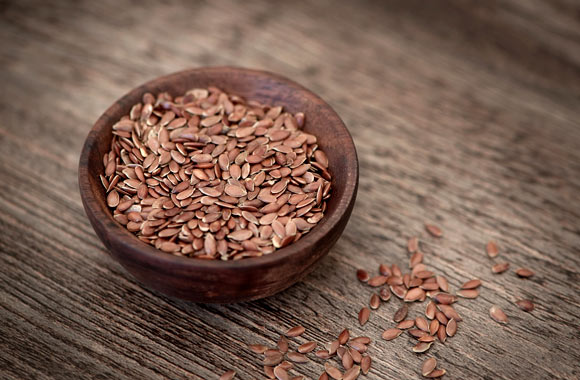
Flaxseeds Benefits
Is Flax Seed something we are supposed to consume? We hear so much about it in the media, but many of us are unclear about why we should consume it and what exactly are the benefits. Even more so, how do we consume it? Interestingly, flaxseed can be enjoyed in many different ways that are easy to incorporate into your daily diet.
Flax Seed is considered a grain and has many wonderful nutritional benefits. Recently, it has been looked at from a scientific perspective and we are learning more and more about all the health benefits and healing effects that flaxseed has to offer us. It is filled with important vitamins, minerals, fiber, antioxidants, and Omega-3 fatty acids. These important nutrients have helped put flaxseed on the list of the top superfoods.
Flax Seed contains a majority of the B vitamins, manganese, magnesium, folate, and copper. These vitamins and minerals act as an important anti-inflammatory to your body, helping to protect your bones and reduce the risk of cancer, heart disease, and diabetes, as well as lowering your cholesterol.
As mentioned earlier, flaxseed is rich in Omega-3 fatty acids which are crucial to reducing chronic illnesses such as arthritis, asthma, diabetes, heart disease, and cancer. The oil found in flaxseed is called alpha-linolenic acid (ALA). ALA is a type of Omega-3 that is found in plants. Our bodies can turn ALA into eicosapentaenoic acid (EPA) and docosahexaenoic acid (DHA), which are Omega-3 fatty acids normally found in fish oil. This makes flaxseed great for vegetarians or individuals who do not consume fish.
Flax Seed is also very high in fiber. There are two types of fiber, soluble and insoluble. Soluble fiber dissolves in the water from your food and creates a gel that traps certain components from food, making them less available for absorption. Insoluble fiber acts like a sponge in your stomach and digestive tract, soaking up all the water from your food and moving through your digestive system, preventing us from constipation and other digestive disorders such as colorectal cancer and hemorrhoids.
Flax Seed is also very high in phytochemicals which help protect our bodies from disease. They carry antioxidants, hormonal benefits, enzyme stimulants, anti-bacterial effects, and more. These phytochemicals are beneficial in reducing certain types of cancer, reducing menopausal symptoms and osteoporosis, reducing the risk of breast cancer, and preventing urinary tract infections.
Flax Seed has also been shown to help aid in depression symptoms. Studies have shown that consuming just 2-3 tablespoons of flaxseed a day can help improve symptoms within eight weeks.
So what are the best ways to enjoy flax seed? Enjoy flax seeds by baking them in your muffins, cookies, & bread. You can also sprinkle flaxseed on salads or mix it with the dressing. Grind the seeds up and mix with water and kefir for a breakfast beverage. Applesauce, yogurt, and oatmeal are also great types of foods you can mix flaxseed with. Consuming at least 2-3 tablespoons a day will give you the greatest benefits.

Corn Benefits
It is an American staple, corn. We have it on the cob at BBQs, we eat it with cream, and we even make soup out of it. It is in fact, one of the most delicious and sweet vegetables out there! But corn today would not exist if we as humans did not figure out how to cultivate it. Thankfully, we did, and it is loved by households all over the world. Besides its great taste, can we benefit from consuming corn regularly, other than the normal “feasts” we tend to use it as a side dish. The answer is an outstanding yes!
As known to most, corn is very much native to the Americas. The Native Americans introduced it to the settlers as a hearty and healthful food. Corn was known as “Mahiz” to the Spanish and Native Americans and known to the American settlers as “maize”.It has been said in history that Christopher Columbus used this newfound food as a prosperous trade with the Indians in the West Indies and then brought the corn back to Spain. From then on, corn became a household staple throughout the world.
Corn is loved by so many people but unfortunately scrutinized in the media for being a high-carb food. In today’s society, low-carb diets are “in” and people seem to shun this wonderful vegetable because of its carbohydrate content. The truth of the matter is, that corn is a wonderful source of nutrients and offers us great health benefits, including weight control. So why shun this crop from our diets? Well, here are some key benefits of the vegetable that may make you think twice about refusing a serving of corn at your next meal.
Corn is filled with many nutrients, such as Vitamin B1, Vitamin B5, Vitamin C, folic acid, magnesium, and phosphorus. Contrary to popular belief, corn is a great source of complex carbohydrates, fiber, and healthy fatty acids. Corn is not a vegetable; it is a grain that offers us great sources of carbohydrates, some protein, and unsaturated fat.
Let’s look at some of the foods we can consume that incorporate corn and offer us the most health benefits.
When you buy corn, try and purchase it in the husk. This is when the corn is in its most natural form and protects the kernels from dry air.
Corn is a great way to incorporate protein into your daily diet, especially if you are a vegetarian. We need to consume at least 45-55 grams of protein a day. One serving of corn is about 5 grams of protein. So it is a beneficial addition to your daily diet, and a tasty one too!
Corn is an excellent source of energy. It provides you with Folate and Vitamin C, which can help reduce the risk of heart disease and also prevent birth defects.
Do not limit yourself to just yellow corn. White, blue, purple, and red corn, have all the great antioxidant benefits that you need.
Corn fiber is known to assist in digestive benefits. The amount of fiber in corn can reduce the risk of bacteria forming in the digestive tract.
So with all the benefits that corn offers us, why would one not include this food in their diet? I strongly suggest adding corn to your weekly, if not a daily diet, to gain all the health benefits it has to offer!
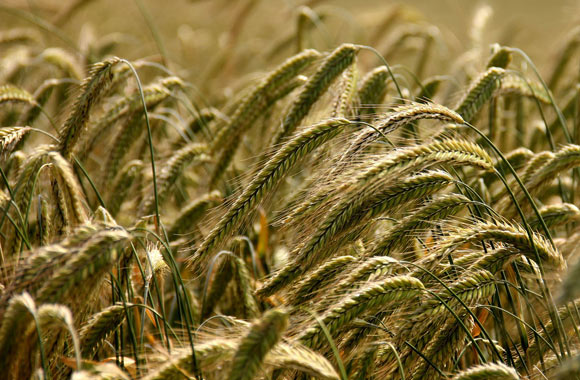
Rye Benefits
If you are anything like me, you would understand me when I say; I could eat Rye bread all day long. I love it for breakfast, toasted with butter. I love it at lunch, on a Rueben sandwich. I love it at dinner time, to dip in my minestrone. I love Rye bread. Now I will admit, maybe I do not “pair” it with the best of items, such as butter or cheese, but there has to be some good to it other than the fact that it just tastes so good! The good news is that Rye actually has many health benefits for the human body, many of which we are unaware of.
Rye originated in southern Europe and was considered a weed for over 2,000 years. Over time, Rye progressed and developed alongside barley and wheat, until it was finally accepted as a cultivated crop. Eventually, Rye was brought over to the United States and is now produced in over 6 states. It is the main element in Rye and Pumpernickel bread.
Rye comes in two varieties: Summer Rye and Winter Rye. The Summer Rye is typically used in bread and alcohol while the Winter Rye is often used as a fertilizer. Like most grains, Rye is available throughout the entire year. Rye has many nutritional substances such as calcium, manganese, magnesium, iron, zinc, proteins, and many of the essential B vitamins.
Rye has been known to lower insulin, is more satisfying than wheat, reduce body weight, help with metabolic syndrome patients, and reduce the risk of heart disease and cardiovascular disease. Because Rye is an excellent source of fiber, it is said to help promote weight loss in individuals, giving them a feeling of fullness after consumption. In addition to reducing the risk of heart and cardiovascular disease, Rye has also been linked to fighting colon cancer. Additionally, recent studies have shown that Rye may help prevent Breast Cancer. Rye contains a substance that has phytoestrogen materials that may help regulate estrogenic activity. With this said, it has also been shown to help reduce the symptoms that many women experience in menopause such as weight gain and hot flashes.
Rye has been used in homeopathic medicinal treatments as well. Individuals have used it along with other herbs such as chamomile and sage, to help stimulate hair growth, after boiling together in the water. For constipation, Rye seeds are recommended for consumption after being washed, crushed, and sweetened with honey.
So it is safe to say, that my love for Rye is here to stay. However, with all food, it is always wise to consume these healthy foods in moderation. My morning Rye toast would probably be more nutritional if I used a healthier butter or margarine. My Reuben sandwich at lunch would probably be healthier with only turkey and sauerkraut rather than with cheese and corned beef. I am ok with these changes, as I love the taste of Rye and I love it, even more, knowing the wonderful health benefits it provides. So join me in my love for Rye and go buy a loaf!
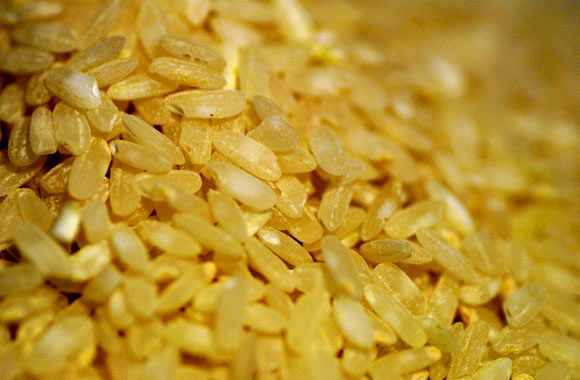
Brown Rice Benefits
Recently in the media, news, and in diet fads, we have been told that it is much more beneficial to consume “brown” products as opposed to “white” products. This means consuming whole wheat pasta, brown rice, whole-wheat bread, grains, etc. For so many years, we have just eaten the “white” stuff, and oh does it taste good! So what gives? Why are all of a sudden told the “white” stuff is no longer good for us and we need to start consuming brown products and whole-grain foods? Well, recent research has shown that the overall health benefits of eating foods like brown rice, outweigh eating the “white” stuff by a landslide, and it might actually help us live a little longer too.
Let’s take a look at brown rice. Rice has been around for thousands and thousands of years. Its origin is from China. For years, we have only been aware of white rice. But recently, brown rice has been brought to our attention, mainly because of its great health benefits. The process that produces brown rice involves removing only the outer layer of the rice kernel, which is the least damaging way to produce rice and still has a large amount of nutritional value. Brown rice is one of the healthiest foods on the planet. It is full of manganese, selenium, magnesium, and fiber.
Manganese helps us produce energy from the carbohydrates and protein we consume. It also helps us maintain healthy cholesterol and protect us from free radicals.
The selenium and fiber find in brown rice are important in the fact that they help promote a healthy digestive tract as well as prevent the possibility of colon cancer. Selenium also helps us maintain a healthy thyroid, metabolic rate, healthy immune system, and antioxidant defense system. Selenium has been shown in recent studies to produce DNA repair in damaged cells. Selenium has also been shown to reduce pain in rheumatoid arthritis patients, prevent heart disease, and even reduce the risk of asthma.
A three-year study was performed on postmenopausal women in regard to cardiovascular benefits and whole grains. It was found that women who consumed at least 6 servings of whole grains every week, such as brown rice, experienced slower advancement of atherosclerosis and stenosis.
An additional study was conducted to see how brown rice may affect the risk of developing type 2 Diabetes. Brown rice has a healthy level of magnesium, which seems to assist in lowering the risk of type 2 Diabetes. The Magnesium found in brown rice has also been linked to reducing the risk of heart attack, stroke, asthma attacks, and migraine headaches.
With all these great benefits of brown rice, one might ask, “So what is the difference between brown and white rice? If rice is so good for us, why do I have to only eat brown rice?” As mentioned earlier, when brown rice is produced, only the outer layer of the rice kernel is removed. When producing white rice, a majority of its nutrients are destroyed by the milling and polishing process. More than 70% of the nutrients, minerals, and vitamins are lost in this process. It might take some getting used to, but brown rice is definitely a better choice for your overall health.

Barley Benefits
Barley is not the first thing that we think of when deciding what to eat for a meal. In fact, just the name Barley, seems to make one think that it is a flavorless, uneventful, and not-so-satisfying food. In reality, Barley is an essential food for us to incorporate into our daily diet, and surprisingly, it actually tastes delicious, especially when made with the right recipes!
So what is Barley and how is it good for us? Barley first originated in the Middle East and over time, has made its way to the Western World. Most of us think of Barley as something we put in stews or soup for texture, but not for taste or pleasure. The truth is, that Barley offers an incredible amount of health benefits and can be incorporated into many meals and in many tasty ways.
Barley is full of minerals, protein, amino acids, and most importantly, both soluble and insoluble fiber. Barley is considered a whole grain and its nutritional benefits are essential to our overall health.
Fiber is one of the most important substances that Barley contains. The two types of fiber, soluble and insoluble, can help promote heart health and reduce heart disease, type II diabetes, as well as cholesterol problems. Soluble fiber, also known as beta-glucan, dissolves in water, then thickens, which then helps slow down your digestion process. This is the type of fiber that makes you feel full. The type that helps us to maintain and control our weight! Insoluble fiber has almost the opposite effect as soluble fiber, in the fact that it acts almost like a laxative and helps prevent troublesome constipation.
Recently, the USDA conducted a study on men and post-menopausal women who consumed at least 6 grams of Barley per day. They found that the study group experienced lower cholesterol levels by a substantial amount. The study also found that the soluble fiber found in Barley had a positive effect on blood glucose and insulin levels. This has led to further studies showing that consuming at least 20-35 grams of fiber per day can help reduce the risk of diabetes and heart disease.
There are several different kinds of Barley that can be consumed and still produce the same types of overall health benefits. Hulled Barley is probably the most commonly used and most well-known type of Barley. This is the type of Barley that needs to be soaked before use in recipes. It is still in its hulled form and contains a majority of its original nutrients. Barley Flour is sometimes used when baking. It can substitute cake and wheat flour. Barley Green Powder comes from natural barley grass. This is normally consumed in juice form. Barley water is an ancient form of consuming Barley and it has been said that Barley water was a sacred drink thousands of years ago. This can be made by boiling water, adding hulled barley, and then herbs or sugar for flavor.
So next time you are at the market, pick up some barley, add it to your favorite stew or risotto, mix the flour with your baked goods, try a “green” grass Barley juice, or just boil it in water with mint and honey for an ancient medicinal drink. Regardless of how you consume this whole grain, your heart, cholesterol, and weight will benefit!
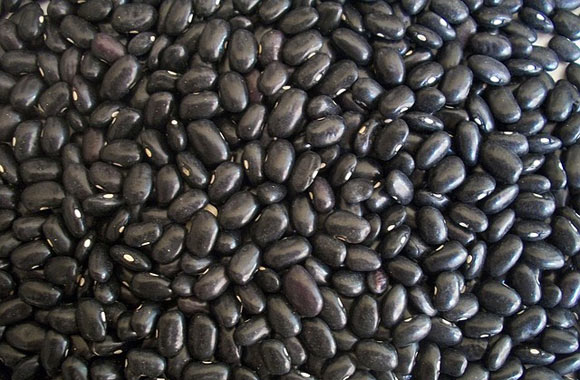
Urad Benefits
Urad is also known as white or black lentil which is a type of bean. It is grown in the southern part of Asia and is native to India where it is cultivated becomes of the numerous amount of vitamins and minerals. The black lentil is consumed whole and ground into a paste or flour.
People that consume Urad on a daily basis get more energy than people who don’t consume Urad. This is important for women who are undergoing the monthly period because urad will help with iron deficiency. The differences between consuming meat products on a daily basis are that Urad has a lower calorie count and fat count. Iron is vital hemoglobin that helps the oxygen to get to various body cells for metabolism and energy production.
This vegetable is important to vegetarians because of the protein that Urad has in it. This makes these beans an inexpensive and tasty protein source of protein. Proteins are important to bodybuilders and the overall building of the human body.
One of the benefits of Urad is that it enhances the digestive system because of its rich fiber content. Urad is full of both of the dietary fibers that a person needs and they are the insoluble and the soluble type of dietary fiber. The soluble part of the dietary fiber helps to quicken the digestive system with its bowel movements while the insoluble part of the dietary fiber aids in preventing constipation and increases the stool bulk.
Urad is also helpful in reducing the damage to the arteries wall because of the rich supply of magnesium and folate levels that are present in Urad. Magnesium is important to heart health because it helps to circulate blood throughout the human body.
Black lentil is found in the kitchen cabinets and is black on the outside while the seeds are white inside. It contains many reasons why we should include Urad in our daily consumption in our diet. It is good for pregnant women because it will improve the quality of the mother’s milk. Urad helps to move the waste through the body more effectively and faster. It will get rid of the problem of constipation.
Black lentils or urad are heavy to digest but help in removing the waste from the body and prevent the onset of constipation. Black lentils or urad give strength to the body and increase the energy given to the muscles. They are good for a mother who wants to breastfeed because black lentils or urad will improve the quality of the milk. It has hidden properties of decreased fat content in the body when eaten in large quantities.
It will also reduce the formation of a cough or acidity in the body. When a person wants to gain weight, he or she can have black lentils or urad cooked properly twice a week. It brings strength to the body and increases weight in the right places on the body.

Soybean Benefits
Soybeans resemble the shape of a pea and are native to Asia. The use of soybeans has been dated back thousands of years and soybeans are valuable for their protein content. They are treasured for putting nitrogen back into the soil
In the Cho Dynasty era in China, soybeans were designated as one of the five sacred grains along with barley, wheat, millet, and rice. Soybeans were used to introduce nitrogen into the soil to grow plants into the soil and finally became a food source when fermentation was discovered.
Fermented soybean products contain proteins, vitamins, anti-carcinogenic properties, and fatty acids that are valuable for the human body. Soybeans are also used to make oil. Soy is a complete protein and soy foods are rich in vitamins and minerals. The vitamins and minerals that soy food is rich in are folates, potassium, and fiber.
Some researchers have suggested that soy food is good at lowering the risk of prostate cancer, colon cancer, and breast cancer. Soy foods also help to prevent the onset of osteoporosis and any other bone health problems. Soy food also helps to prevent the onset of heat flashes during menopause.
According to recent research studies, the United States people would increase their intake of Vitamins K, folate, calcium, manganese, iron, and fiber if they would only replace their meat source with soy. Soybeans are also a rich source of these minerals: copper, manganese, molybdenum, phosphorus, potassium, the B vitamin riboflavin, and the Omega-3 fatty acids.
When a person replaces their meat and dairy with soy, they would lower their total cholesterol intake by 125 milligrams per day and saturated fat by 2.4 grams per day. These changes in a person’s diet would also help to prevent heart diseases and whole-food soybeans have been shown to provide us with better heart support than dietary supplements that contain soy components. The most consistent effect of soybeans’ intake on blood fats has been a moderate lowering of LDL cholesterol. Some studies show positive impacts on blood fats such as the lowering of triglycerides and the raising of HDL cholesterol. The LDL cholesterol is the bad cholesterol of the body and HDL cholesterol is the good cholesterol of the human body.
Many research studies provide us with evidence that supports the role of whole soy food in cancer prevention diets. Genistein is a soy isoflavone that can increase the activity of a tumor suppressor protein called p53. When p53 becomes more active, it can help trigger the programmed cell death in the cancer cells. Genistein also helps to trigger cell cycle arrest by helping stop ongoing cancer cell activity. It has been shown to block the activity of protein kinase in a way that can help slow tumors from forming again.
Some studies have shown a lower rate of osteoporosis in countries that have increased the daily intake of soy food and some studies have often failed to show any improvement in bone mineral density or other words in bone metabolism. A person should decide on their own what they want to believe about these two studies.


